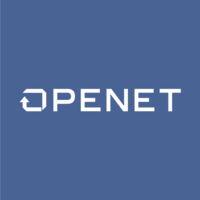AIOps stands for Artificial Intelligence for IT Operations. It is a technology that combines machine learning, big data analytics, and other artificial intelligence techniques to automate and improve IT operations. AIOps is designed to help organizations manage and optimize their IT infrastructure, applications, and services more efficiently and effectively.
AIOps uses advanced analytics and machine learning algorithms to analyze large volumes of data generated by IT systems and applications. It can identify patterns, detect anomalies, and provide insights into the root cause of issues. AIOps can also automate routine tasks, such as monitoring, alerting, and incident management, freeing up IT staff to focus on more strategic activities.
One of the key challenges faced by modern organization is processing infinite amount of data, which could easily overwhelm operations teams. Moreover, beyond just processing, making sense of information, esp. Operational awareness is critical for success of today’s IT Operations.
Another key driver for adoption of AIOps in modern IT Organization, is adoption of multi-cloud. While many organizations, including Telco Service providers, still have large on-prem deployments, public cloud/hybrid cloud has entered the premises, where few workloads have already made shift to Cloud. Operationalizing (Day1/2 and beyond) multi-cloud environments, with enormous amount of data gathered, is next level challenges IT Ops teams must tackle daily.
While AIOps solutions catering to modern IT Organization, for Telco Service providers, AIOps is domain specific challenge to solve. The main difference is data they directly collect and use cases they solve, beyond typical AIOps Use cases offered in IT Organizations. It could be termed as Domain specific AIOps, while Domain Agnostic AIOps caters to wider IT landscape and use cases.

In the telecom industry, AIOps can be used to improve network performance, reduce downtime, and enhance the customer experience. AIOps can help telecom operators monitor and manage their network infrastructure, detect, and resolve issues in real-time, and optimize network resources to meet changing demands. AIOps can also help telecom operators analyze customer data to gain insights into customer behavior and preferences, enabling them to offer more personalized services and improve customer satisfaction.
AIOps is a rapidly evolving field, and new use cases and applications are emerging all the time. Some of the key trends in AIOps include the use of AI and ML to automate IT operations processes, the integration of AIOps with DevOps and other IT processes, and the use of AIOps to improve security and compliance. As AIOps continues to evolve, it is likely to become an increasingly valuable tool for IT teams in a wide range of industries, including telecom.
How AIOps differs with Modern IT Operations in Telecom:
One big question arises among many Telco Service providers is that, how AIOps differs from their tradition Operations. It’s quite an interesting question. Let’s discuss it briefly.
If you look at modern IT or even Telecom Service providers, Monitoring or even modern Observability stack is quite siloed. Multiple vendors/partners have built solutions to monitor and operationalize their own stacks. E.g. Network Vendors such as Cisco or Juniper offer Network Observability data of their devices separately or even Platform/Cloud Providers, offer Platform level metrics and logs stored in their respective Observability solutions. In addition, Application providers, they offer their application specific monitoring tools, which are also siloed in most cases.
For Service providers, it creates a huge challenge to get complete picture of their entire network and organization at one place. Moreover, amount of data needs to collect, gathered from multitude of systems, and processed at one place such as central data lake is daunting task for them.
Modern AIOps tends to solve these sets of challenge. Irrespective of if you have implemented central Observability solutions (refer ELK or EFK stack) in your organization, AIOps solutions can collect, gather, and process infinite amount of data with help of advance AI/ML/Deep Learning Algorithms and help to generate actionable insights from the data quickly. It certainly helps to leverage central data warehouses or data lakes, if already available, but we have seen many AIOps solutions doesn’t mandate to have your own data lake built, which is quite a big relief for most of the service provider.
Moreover, as mentioned, many service providers have adopted multi hybrid cloud solutions for their 4G/5G deployments, which create Operational silos and overheads. AIOps solutions can address these challenges with multi-cloud, multi-platform metrics collection and offer single pane of glass to Operational team without worrying about siloed monitoring stacks offered by multiple partners.
AIOps Use Cases in Telecom
AIOps in Telecom has several use cases that can help telecom companies to improve their operations and customer experience. One of the primary use cases is network management. AIOps can help telecom companies to monitor their network infrastructure, identify issues, and resolve them proactively. This can help to reduce downtime, improve network performance, and enhance customer satisfaction.
Another use case of AIOps in Telecom is customer service. AIOps can help telecom companies to analyze customer data and provide personalized recommendations to customers. This can help to improve customer satisfaction and reduce churn rate. AIOps can also help to automate customer service processes, such as ticket routing and resolution, which can save time and resources for telecom companies.
One of the most popular use cases of AIOps in Telecom is predictive maintenance & fault remediation. AIOps can help telecom companies to predict equipment failures and schedule maintenance activities proactively. This can help to reduce downtime, improve network performance, and save costs for telecom companies. AIOps can also help to optimize maintenance schedules based on real-time data, which can further improve efficiency and reduce costs.
There are few upcoming trends in Telecom including sustainability, driving AIOps in Telecom to gather power consumption data across various topologies, analyse it and predict the future power consumption or drive power efficiency to automate life cycle of various infra components. Red Hat Inc, the Open-Source Software giant, has recently announced one such CNCF initiative, Project Kepler, which gathers various energy level metrices of Kubernetes clusters including Pods and Nodes, and export it. Red Hat intends to integrate Kepler in future OpenShift releases.
Finally, AIOps can be used for capacity planning in the Telecom industry. AIOps can help telecom companies to analyze network traffic data and predict future demand for network resources. This can help to optimize network capacity and ensure that telecom companies can meet the growing demand for data services. AIOps can also help to identify underutilized resources and optimize resource allocation, which can further reduce costs for telecom companies.
Benefits of using AIOps
AIOps in Telecom offers several benefits over traditional methods. One of the primary advantages is the ability to automate and streamline operations. AIOps can monitor and analyze vast amounts of data in real-time, allowing for faster and more accurate decision-making. This can lead to increased efficiency, reduced downtime, and improved customer satisfaction.

The benefit to automate and streamline remediation (Respond) is becoming critical aspect in evaluating benefits of AIOps solutions. Many IT Organization and Telco Service providers are adopting various IT Automation solutions including Ansible Automation to automate various manual repetitive tasks including various Operational processes. One such example is Red Hat Event Driven Ansible, announced in Red Hat Summit 2023. With event driven Ansible, now, AIOps solutions such as Dynatrace AIOps, can trigger execution of certain Ansible Playbooks directly without any manual intervention, leading to auto-remediation of operational issues discovered by AIOps solutions.
AIOps in Telecom can also help to reduce costs by optimizing resource utilization. By analyzing data on network traffic, usage patterns, and other factors, AIOps can identify areas where resources are being underutilized or overprovisioned. This information can be used to make more informed decisions about resource allocation, leading to cost savings and improved efficiency.
Another benefit of AIOps in Telecom is the ability to detect and resolve issues before they become critical. According to IBM, AIOps can reduce network downtime by up to 80%. A By leveraging machine learning and predictive analytics, AIOps can identify patterns and anomalies in data that may indicate a potential problem. This allows for proactive measures to be taken to prevent issues from occurring, rather than simply reacting to them after the fact.
Finally, AIOps in Telecom can help to improve the overall quality of service. By monitoring and analyzing data on network performance, customer behavior, and other factors, AIOps can identify areas where improvements can be made. This can lead to better service delivery, increased customer satisfaction, and improved business outcomes.
How Telcos using AIOps
Telecom companies are currently implementing AIOps in their operations in numerous ways. One of the most common use cases is in network management. AIOps can help telecom companies to monitor their networks in real-time, identify potential issues, and take proactive measures to prevent downtime. This can lead to improved network performance, increased customer satisfaction, and reduced costs. And as mentioned above, Predictive Maintenance and Fault remediation is one the popular use cases under network management category.
Telecom companies are also using AIOps in their marketing and sales operations. AIOps can help to analyze customer data and provide insights into customer behavior and preferences. This can help telecom companies to develop targeted marketing campaigns and improve their sales strategies.
Another way that telecom companies are using AIOps is in customer service. AIOps can help to automate customer service processes, such as chatbots and virtual assistants, which can provide customers with quick and efficient support. This can lead to improved customer satisfaction and reduced costs for telecom companies.
Finally, telecom companies are using AIOps in their security operations. AIOps can help to detect and respond to security threats in real-time, which can help to prevent data breaches and other security incidents. This can lead to improved security and reduced costs for telecom companies.
Trends in AIOps for Telcos
A trend that is emerging in the use of AIOps in the Telecom industry is the integration of machine learning and artificial intelligence algorithms into network operations. This allows for real-time monitoring and analysis of network performance, enabling proactive identification and resolution of issues before they impact customers.
According to BMC, approx. 75% of telecom organization plan to adopt AIOps in near future. Moreover, there are certain market reports, which states that telecom industry is expected to be one of the fastest-growing sectors in AIOps adoption.
One major trend we see clearly emerging is the use of AIOps for predictive maintenance and fault rectification/remediation. By analyzing data from network devices and sensors, equipment providers, ticketing systems, weather monitoring system etc AIOps tools can identify potential equipment failures before they occur, allowing for proactive maintenance and reducing downtime. Moreover, there’s growing trend to use IT Automation tools such as Ansible Automation to automate auto-remediation of Operational issues, discovered by AIOps solutions, without manual intervention.
Telecom companies are also using AIOps to improve customer experience. By analyzing customer data and behavior, AIOps can provide personalized recommendations and solutions, as well as identify potential issues before they become complaints. AIOps is also being used for network automation, enabling the creation of self-healing networks that can automatically detect and resolve issues without human intervention. This reduces the need for manual troubleshooting and allows for faster resolution times.
Moreover, we do see growing interest of using AIOps solutions to drive Telco sustainability goals. It’s likely to drive AIOps adoption faster among Telco service providers, esp. where tools such as Red Hat Kepler capturing Kubernetes Pod and Node power metrics and export it for further analysis and automate infra life cycles.
Finally, there is a trend towards the use of AIOps for security and fraud detection. By analyzing network traffic and user behavior, AIOps can identify potential security threats and fraudulent activity, enabling proactive measures to be taken to prevent them.
(All views are personal. All reference citations are for reference purpose and owned by respective Organization).







